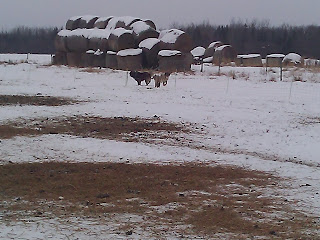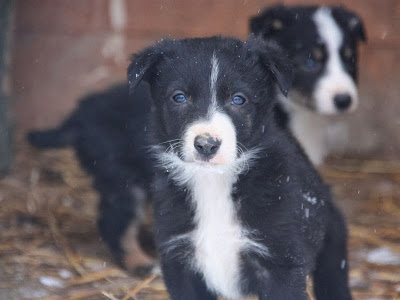As many of you know we had a littler of sarplaninac pups,
and much to my surprise we had a litter of border collie pups.
and much to my surprise we had a litter of border collie pups.
This presented me with the ideal circumstances to do some research,
|
Border Collie Pups
|
Sarplaninac Pups
|
|
Are tiny
|
Are huge
|
|
Averagely fluffy to short coated
|
Super fluffy
|
|
Play fight in a friendly manner
|
Play fighting ends op in full blown warfare
|
|
Super fast and racy
|
Slow and sloth like
|
|
Your trip over border collie pups
|
Sarplaninac pups are out patrolling their territory
|
|
BC pups come when you call “puppies” in a sweet high tone
|
Sar glance back at you with this amazed expression on their face
|
|
Need entertainment
|
Can entertain themselves
|
|
Never sit still for a photo
|
Will sit still and pose for a picture
|
|
Shiver and shake from a touch of snow
|
Love nothing more than sleeping outside in a blizzard
|
|
Are solids, hard colours
|
Are soft sable, grey tones
|
|
Have a will to please
|
Have a will to please IF is suits them
|
|
At 8 weeks a bc pup is ready for its new life
|
At 8 weeks a sar is still such a baby
|
|
Start herding anything
|
Growl and bark at strangers
|
|
Teaching walking on a lead, come, sit and down take about 5 minutes
|
Teaching walking on a lead, come, sit and down can take a lifetime
|
|
When walking down the road, people say “oh a sheepdog/border collie
cool”
|
When walking down the road, people say “oh is that a great Pyrenees,
husky, wolf cross, coyote?” Never do they get it right.
|
|
Are sheepdogs that herd
|
Are sheepdogs that guard
|
|
Cute as button
|
Cute as button
|
We need both
and both breeds perform the jobs required of them.
They allow us to manage our sheep efficiently,
manage our grazing optimally
and have flexibility.
and both breeds perform the jobs required of them.
They allow us to manage our sheep efficiently,
manage our grazing optimally
and have flexibility.





+Pictures,+Africa+Safari+....jpg)





















































